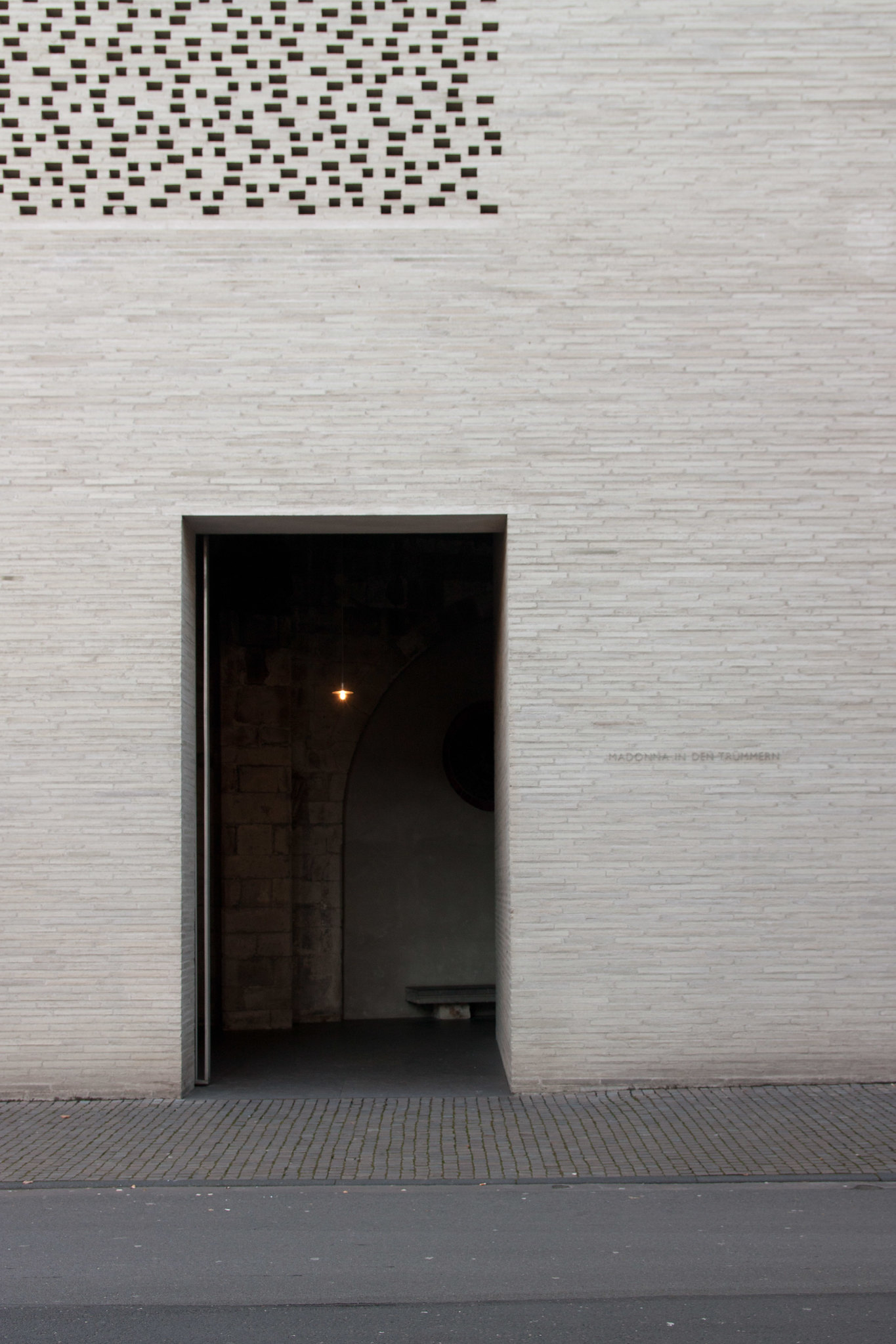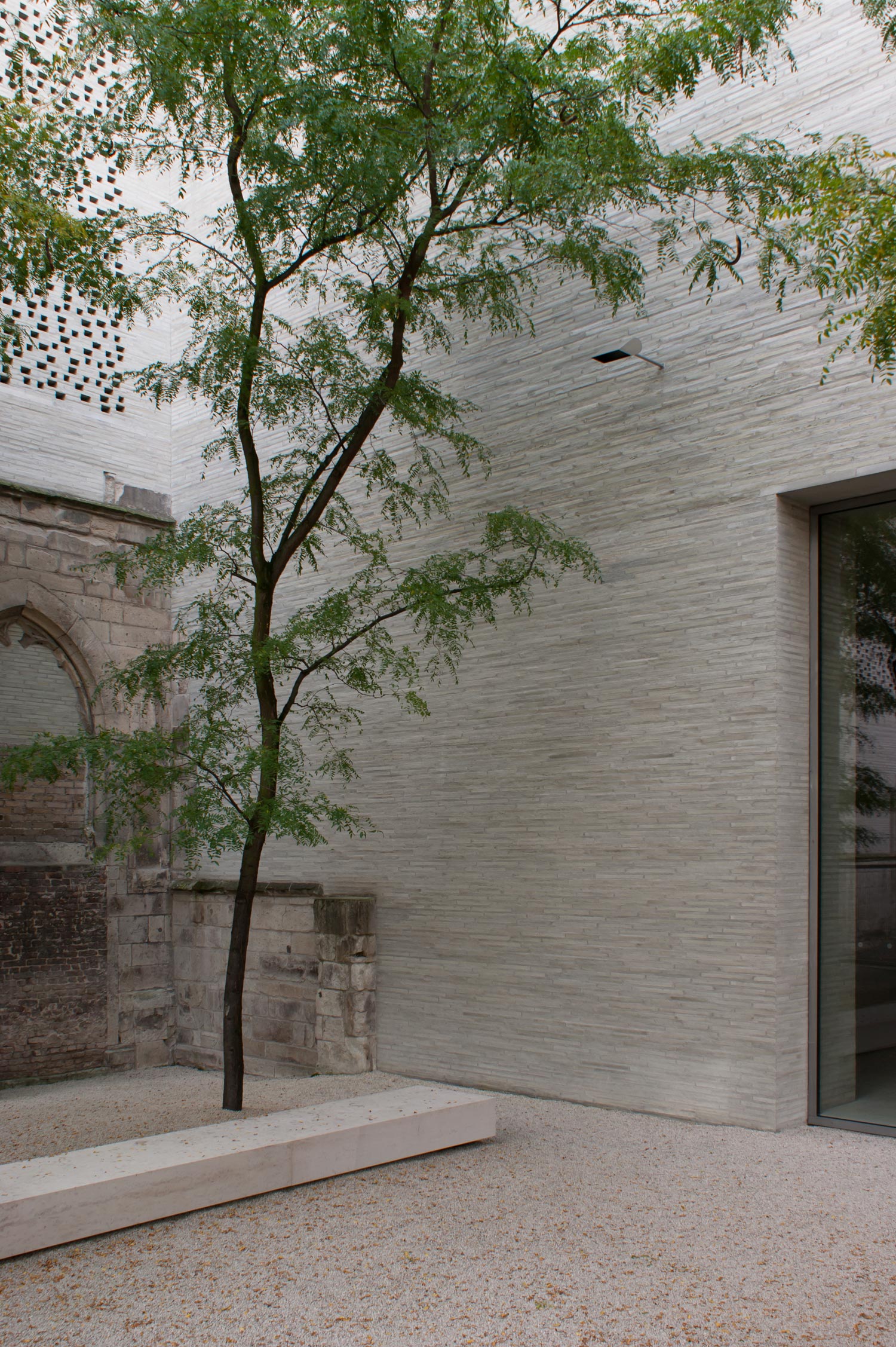The Kolumba Museum in Cologne is an important art museum that houses the art collection of the Roman Catholic Archdiocese of Cologne. It was opened in 2007 to a design by the renowned architect Peter Zumthor. The new building stands on the ruins of the late Gothic church of St. Kolumba, which was largely destroyed in the Second World War. The museum masterfully combines the historical substance of the site with a modern, subtle and minimalist architectural language, reflecting over a millennium of art history.
Zumthor’s design is considered exemplary for his respectful approach to historical sites. The architect placed particular emphasis on the materiality and construction details. Specially handmade bricks from Petersen Tegl in Denmark were used for the façade. These bricks, fired with charcoal, create a warm hue that blends harmoniously with the ancient ruins and the stone remains from Roman and medieval times.


Perforated brickwork elements allow diffuse light to flow into the interior of the museum, with the play of light over the ruins changing with the changing seasons. This creates a peaceful, constantly changing atmosphere. The museum comprises a total of 16 different exhibition rooms, all of which are arranged around a centrally located garden courtyard. This courtyard offers a quiet retreat for reflection and a break from everyday life.
The architecture of the Kolumba Museum creates a unique, meditative atmosphere that invites visitors to contemplate and reflect. The materials chosen link the past with the present and guide visitors through the epochs represented in the museum’s art collection. The play of light and shadow that enters the interior through the perforated walls creates a sensory experience that subtly illuminates the works of art in the exhibition rooms while adding a spiritual dimension to them.
The minimalist and timeless architecture blends harmoniously into the historical substance and emphasizes the special atmosphere of the location.

